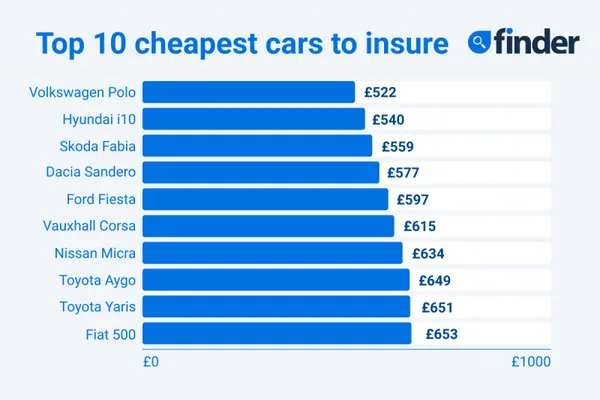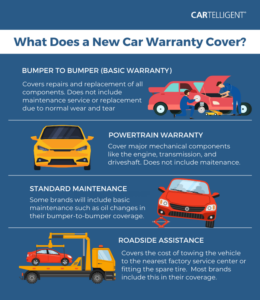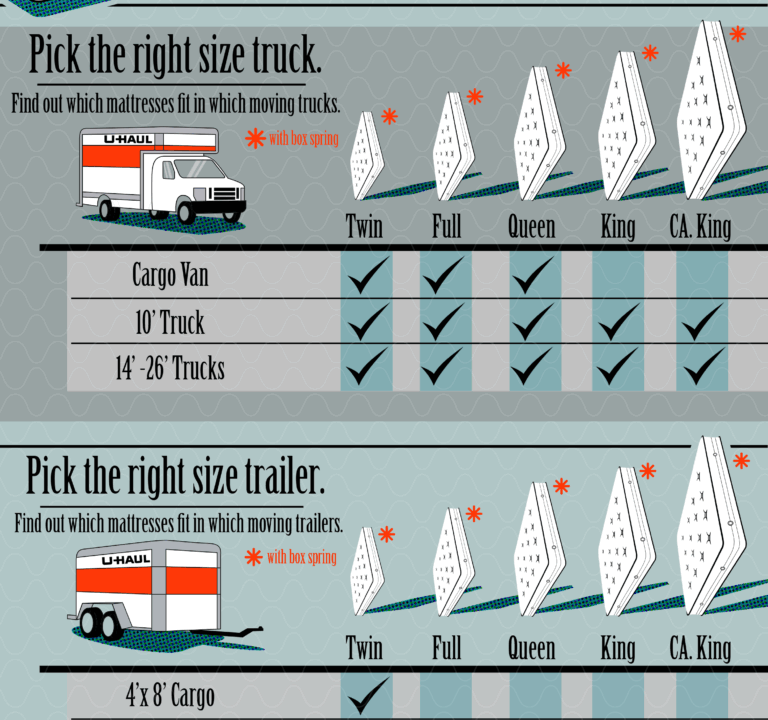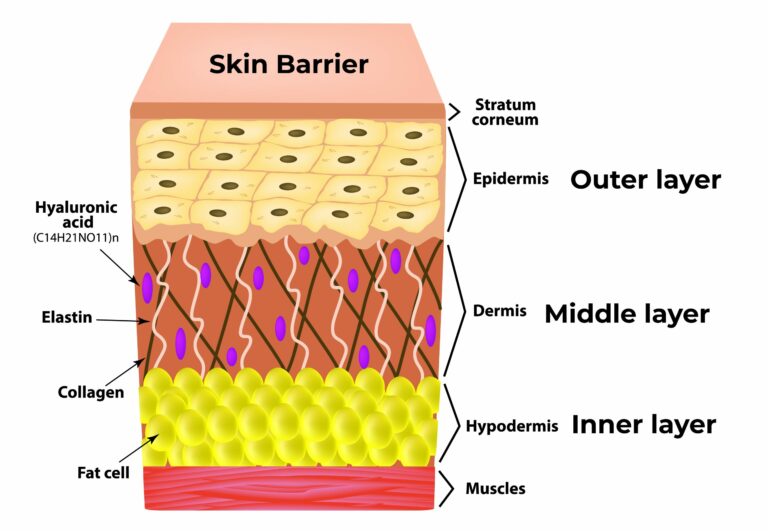Insurance For A Brand New Car: Your Comprehensive Guide to Protecting Your Investment
Insurance For A Brand New Car: Your Comprehensive Guide to Protecting Your Investment cars.truckstrend.com
Driving a brand new car off the lot is an exhilarating experience. The scent of new upholstery, the pristine paint, the cutting-edge technology – it’s a significant investment and a source of immense pride. But before you hit the open road, there’s one crucial step that can’t be overlooked: securing the right insurance. Insurance for a brand new car isn’t just a legal formality; it’s a vital shield designed to protect your valuable asset, your financial well-being, and your peace of mind.
This comprehensive guide will delve into the intricacies of insuring a new vehicle, exploring why it’s different from insuring an older car, what types of coverage are essential, and how to navigate the process to ensure you’re fully protected without overpaying.
Insurance For A Brand New Car: Your Comprehensive Guide to Protecting Your Investment
The Unique Imperative of Insuring a Brand New Car
When you purchase a new vehicle, you’re not just buying transportation; you’re investing in a rapidly depreciating, high-value asset. Unlike older cars, new vehicles come with a higher sticker price, advanced technological features, and often, financing obligations. These factors collectively elevate the stakes when it comes to insurance.
Why a New Car Demands Specialized Insurance Attention:
- Higher Value, Higher Risk: A brand new car is inherently worth more. In the event of an accident or theft, the potential payout from your insurer will be significantly larger, making comprehensive coverage paramount.
- Rapid Depreciation: Cars begin to depreciate the moment they leave the dealership. This "depreciation gap" can leave you owing more on your loan or lease than the car is worth, especially if it’s totaled early on. Standard insurance might not cover this gap.
- Advanced Technology and Repair Costs: Modern cars are equipped with sophisticated safety features (Advanced Driver-Assistance Systems – ADAS), complex sensors, and intricate electronics. While these features enhance safety, they also make repairs more expensive and specialized, directly impacting collision and comprehensive claims.
- Theft Magnet: Brand new, desirable models can be more attractive targets for thieves, increasing the importance of robust anti-theft measures and comprehensive coverage.
- Financing Requirements: If you’ve financed or leased your new car, your lender will almost certainly mandate full coverage (collision and comprehensive) and often recommend or require additional coverages like GAP insurance.

Understanding these unique characteristics is the first step toward building an insurance policy that truly safeguards your new automotive investment.
Essential Types of Coverage for Your Brand New Vehicle
While basic liability insurance is legally required in most places, a brand new car demands a more robust suite of coverages. Here’s a breakdown of the types of insurance you should strongly consider:
1. Core Mandated & Highly Recommended Coverages

Liability Insurance: This is the bedrock of any car insurance policy and is legally required in most states/provinces.
- Bodily Injury Liability: Covers medical expenses, lost wages, and pain and suffering for others if you cause an accident.
- Property Damage Liability: Covers damage to another person’s property (e.g., their car, fence, building) if you are at fault.
- Why it’s crucial for new cars: While it doesn’t protect your car, adequate liability limits protect your assets from lawsuits stemming from a severe accident. New cars, with their higher capabilities, can sometimes be involved in more significant accidents.
-
Collision Coverage: This pays for damages to your own vehicle resulting from a collision with another vehicle or object (e.g., a tree, pole), regardless of who is at fault.
- Why it’s crucial for new cars: Given the high value of a new car, collision coverage is indispensable. Without it, even a minor fender bender could leave you with a hefty repair bill out of pocket. Lenders will almost always require this.
-
Comprehensive Coverage: This covers damage to your vehicle from non-collision incidents, such as:
- Theft or vandalism
- Fire
- Natural disasters (hail, flood, wind, earthquake)
- Falling objects (tree branches, rocks)
- Animal collisions
- Why it’s crucial for new cars: Protects your valuable asset from a wide range of unpredictable events that are outside your control. Lenders will almost always require this.
2. Protecting Yourself and Your Investment Further
-
Uninsured/Underinsured Motorist (UM/UIM) Coverage:
- Uninsured Motorist (UM): Pays for your medical bills and, in some states, car repairs if you’re hit by a driver who has no insurance.
- Underinsured Motorist (UIM): Kicks in when an at-fault driver has some insurance, but not enough to cover your damages.
- Why it’s crucial for new cars: Despite carrying full coverage on your new car, UM/UIM protects you from the financial irresponsibility of others, especially when your new car’s repair costs or your medical bills are substantial.
-
Medical Payments (MedPay) or Personal Injury Protection (PIP):
- MedPay: Covers medical expenses for you and your passengers, regardless of who is at fault in an accident.
- PIP: Similar to MedPay but often broader, covering medical expenses, lost wages, and sometimes even funeral expenses. It’s common in "no-fault" states.
- Why it’s crucial for new cars: Even if your new car has advanced safety features, accidents can still cause injuries. These coverages ensure immediate medical care without waiting for fault to be determined.
3. Specialized New Car Protections
-
GAP (Guaranteed Asset Protection) Insurance: This is arguably the most critical additional coverage for a brand new, financed, or leased car. Due to rapid depreciation, your car’s market value can quickly fall below the outstanding balance of your loan or lease. If your car is totaled, standard collision/comprehensive insurance will only pay out the car’s current market value. GAP insurance covers the "gap" between this payout and what you still owe the lender.
- Why it’s crucial for new cars: Without GAP insurance, you could be left making payments on a car you no longer own, potentially for thousands of dollars.
-
New Car Replacement Coverage: If your brand new car (typically within the first 1-3 years or a certain mileage) is totaled, this coverage pays to replace it with a brand new car of the same make, model, and trim, rather than just its depreciated actual cash value.
- Why it’s crucial for new cars: It fully protects your investment from depreciation in the early years, ensuring you don’t have to downgrade or pay extra for a new replacement.
-
Roadside Assistance/Towing and Rental Car Reimbursement:
- Roadside Assistance: Provides help for flat tires, dead batteries, lockouts, and towing.
- Rental Car Reimbursement: Pays for a rental car while your vehicle is being repaired after a covered claim.
- Why it’s crucial for new cars: While new cars are reliable, unexpected issues can arise. These conveniences minimize disruption and added costs.
Factors Influencing Your New Car Insurance Premiums
Several variables come into play when calculating the cost of insuring your brand new vehicle. Understanding these can help you anticipate costs and potentially find savings.
-
The Car Itself:
- Make, Model, Year: Luxury, sports cars, and high-performance vehicles typically cost more to insure due to higher repair costs, greater theft risk, and more expensive parts.
- Safety Features: Cars with advanced safety features (e.g., automatic emergency braking, lane-keeping assist) can sometimes qualify for discounts, but the repair cost of these complex systems can also increase premiums.
- Repair Costs & Parts Availability: Vehicles with readily available and affordable parts generally have lower insurance costs.
- Theft Rates: Models frequently targeted by thieves will have higher comprehensive coverage costs.
-
Your Personal Profile:
- Driving Record: A clean driving record (no accidents or traffic violations) is the single biggest factor in keeping premiums low.
- Age and Experience: Younger, less experienced drivers typically face higher premiums, especially for new, powerful cars.
- Location: Urban areas with higher traffic density, theft rates, and vandalism often have higher premiums than rural areas.
- Credit Score (where permissible): In many states, insurers use credit-based insurance scores, as studies suggest a correlation between credit history and claims likelihood. A higher score often means lower premiums.
- Annual Mileage: The more you drive, the higher your risk of an accident, leading to higher premiums.
-
Your Policy Choices:
- Deductible: Choosing a higher deductible (the amount you pay out-of-pocket before insurance kicks in) will lower your premium, but you’ll pay more if you file a claim.
- Coverage Limits: Higher liability limits provide more protection but also increase your premium.
- Discounts: Taking advantage of various discounts (see "Tips for Saving Money") can significantly reduce your costs.
The Process of Insuring Your New Car: A Step-by-Step Guide
Getting insurance for your new car isn’t complicated, but it requires a bit of foresight and diligence.
- Start Early (Before You Buy!): Get insurance quotes before you finalize your car purchase. This allows you to factor insurance costs into your total budget and avoid surprises. Some car models are surprisingly expensive to insure.
- Gather Necessary Information:
- Vehicle Information: Make, model, year, VIN (if available), safety features, anti-theft devices.
- Driver Information: Names, dates of birth, driver’s license numbers for all drivers in your household.
- Driving History: Any past accidents, tickets, or claims.
- Current Insurance Details: If you already have a policy, your current insurer and policy number.
- Compare Quotes from Multiple Insurers: Don’t just go with your current provider. Shop around!
- Online Comparison Tools: Many websites allow you to get multiple quotes simultaneously.
- Independent Agents: An independent insurance agent can shop around for you with various carriers.
- Direct Insurers: Contact major insurance companies directly (e.g., Geico, Progressive, State Farm, Allstate).
- Understand the Coverage Details: Don’t just look at the price. Compare what each policy covers, the deductibles, and any exclusions. Pay close attention to GAP and New Car Replacement options.
- Bind Your Policy: Once you’ve chosen a policy, you’ll need to "bind" it. This means making your first payment and confirming the coverage is active. You’ll typically need proof of insurance (an insurance card or declaration page) to drive the car off the lot.
- Review and Adjust Annually: Your insurance needs can change. Review your policy annually, or whenever there’s a significant life event (new driver, moving, marriage, job change) to ensure you still have the best coverage at the best price.
Tips for Saving Money on New Car Insurance
While insuring a new car can be more expensive, there are many ways to mitigate the costs:
- Shop Around Aggressively: This is the #1 tip. Prices vary wildly between companies for the same coverage.
- Bundle Policies: Combine your auto insurance with home, renters, or life insurance with the same provider for significant multi-policy discounts.
- Choose a Higher Deductible (Wisely): If you have a solid emergency fund, opting for a $1,000 deductible instead of $500 can lower your premium. Just be sure you can afford the deductible if you need to file a claim.
- Maintain a Clean Driving Record: Avoid accidents and traffic violations at all costs. This is the most impactful long-term strategy for lower premiums.
- Ask About Discounts: Always inquire about every possible discount:
- Good driver/safe driver
- Good student
- Multi-car
- Anti-theft device
- Low mileage
- Loyalty
- Professional organizations
- Defensive driving course completion
- Consider the Car’s Insurance Cost Before Buying: Use online tools to get insurance estimates for different models you’re considering. A slightly less expensive car to insure might save you thousands over its lifetime.
- Improve Your Credit Score: If permissible in your state, a higher credit score can lead to lower premiums.
- Enroll in Telematics Programs: Many insurers offer programs (often via a mobile app or device) that monitor your driving habits (speed, braking, mileage). Safe drivers can earn discounts.
- Pay Annually or Semi-Annually: Paying your premium in one lump sum rather than monthly installments often saves you money.
Common Challenges and Solutions for New Car Insurance
- Challenge: High Premiums for Young Drivers: New drivers, especially those under 25, face significantly higher rates due to their inexperience.
- Solution: Good student discounts, defensive driving courses, being added to a parent’s policy (if applicable), and driving a safer, less powerful vehicle can help.
- Challenge: Understanding Complex Policies: Insurance jargon can be confusing, making it hard to compare apples to apples.
- Solution: Don’t hesitate to ask your agent or insurer to explain anything you don’t understand. Read reviews and look for companies with good customer service.
- Challenge: The Depreciation Gap: The risk of owing more than the car is worth if totaled.
- Solution: Invest in GAP insurance, especially if you made a small down payment or financed for a long term.
- Challenge: Claims Process for New Technology: Repairing ADAS features can be complex and expensive.
- Solution: Ensure your policy includes robust collision and comprehensive coverage. Choose an insurer with a reputation for smooth claims processing and access to qualified repair shops.
Illustrative Cost Factors and Potential Ranges for New Car Insurance
It is impossible to provide exact "price tables" for car insurance due to the vast number of variables (driver’s age, location, driving record, specific car model, chosen deductibles, insurer, discounts, etc.). However, we can illustrate the types of coverage and factors that influence their cost, along with highly generalized potential annual ranges for an average new car owner. These figures are purely illustrative and will vary wildly in real-world scenarios.
Disclaimer: The following table provides hypothetical annual cost ranges based on general market observations for a "typical" new car (e.g., a mid-range sedan or SUV, not a luxury or sports car) driven by a driver with a clean record and average risk profile. Your actual premium will be unique to your specific circumstances.
| Coverage Type | What It Covers | Key Factors Influencing Cost | Illustrative Annual Range (USD) * | Essentiality for New Car |
|---|---|---|---|---|
| Bodily Injury Liability | Injuries to others you cause | State minimums, chosen limits, driver’s record, location, insurer | $200 – $800+ | Mandatory/Critical |
| Property Damage Liability | Damage to others’ property you cause | State minimums, chosen limits, driver’s record, location, insurer | $100 – $500+ | Mandatory/Critical |
| Collision | Damage to your car from collision | Vehicle value, repair costs, deductible, driver’s record, car safety features | $400 – $1,500+ | Highly Recommended/Lender Req. |
| Comprehensive | Damage to your car from non-collision events (theft, fire, hail) | Vehicle value, theft rates of model, deductible, location, car safety features | $200 – $800+ | Highly Recommended/Lender Req. |
| Uninsured/Underinsured Motorist | Your injuries/damage from drivers with insufficient/no insurance | Chosen limits, state requirements, cost of medical care in area | $50 – $300+ | Highly Recommended |
| Medical Payments/PIP | Your/passenger medical bills regardless of fault | Chosen limits, state requirements (no-fault), cost of medical care in area | $50 – $250+ | Recommended |
| GAP Insurance | Covers gap between car’s value and loan amount if totaled | Car value, loan amount, down payment, loan term, insurer | $50 – $200+ (annually) | Critical for Financed/Leased |
| New Car Replacement | Replaces totaled new car with same model new car | Vehicle value, age/mileage limits, insurer | $50 – $150+ | Highly Recommended |
| Roadside Assistance | Towing, jump-starts, flat tire service | Insurer, scope of service | $10 – $50+ | Optional/Convenience |
| Rental Car Reimbursement | Pays for rental while your car is repaired | Daily limit, max days, insurer | $20 – $70+ | Optional/Convenience |
| Total Illustrative Annual Cost | (Sum of chosen coverages based on individual factors and discounts) | Varies wildly based on all factors above, ranging from a few hundred to several thousand. | $1,200 – $3,500+ |
Note: These ranges are generalized estimates for a single policy. Actual costs will depend on specific quotes you receive.
Frequently Asked Questions (FAQ) About New Car Insurance
Q1: Do I need insurance before driving my new car off the dealership lot?
A1: Absolutely, yes. In almost all states and provinces, it is illegal to drive a car without at least minimum liability insurance. Dealerships will typically require proof of insurance before you can take possession of the vehicle. You can often get temporary coverage or bind your new policy over the phone or online right before pickup.
Q2: How long does it take to get new car insurance?
A2: Getting a quote and binding a policy can be done in as little as 15-30 minutes if you have all your information ready. However, taking the time to compare multiple quotes from different insurers and thoroughly understand your options might take a few hours or even a day or two. It’s best to start this process a week or two before your intended purchase date.
Q3: Is GAP insurance really necessary for a new car?
A3: For most financed or leased new cars, GAP insurance is highly recommended, and often required by lenders. New cars depreciate rapidly, meaning their market value can quickly fall below the amount you owe on your loan. If your car is totaled early on, standard insurance will only pay out its depreciated value, leaving you responsible for the "gap" between that payout and your outstanding loan balance.
Q4: Can I just use my old car’s insurance for my new car temporarily?
A4: Most insurance policies offer a "grace period" (typically 7-30 days) during which your new vehicle is temporarily covered under the terms of your existing policy, usually with the broadest coverage you already have. However, you must inform your insurer about the new vehicle within this timeframe to ensure continuous coverage and to add it formally to your policy. Do not rely on this grace period for long.
Q5: Does the color of my new car affect my insurance rates?
A5: No, the color of your car has no impact on insurance premiums. This is a persistent myth. Insurers care about the make, model, year, engine size, safety features, theft rates, and repair costs, not the paint color.
Q6: How often should I review my new car insurance policy?
A6: You should review your policy at least once a year, typically at renewal time. Additionally, review it whenever you have a significant life event:
- Adding or removing a driver (e.g., a child gets their license)
- Moving to a new address
- Changing jobs or commuting habits (e.g., working from home)
- Getting married or divorced
- Significant changes to your vehicle (e.g., major modifications, reaching a certain mileage threshold)
Q7: What happens if I total my new car without "New Car Replacement" coverage?
A7: Without New Car Replacement coverage, if your new car is totaled, your insurer will pay out its "Actual Cash Value" (ACV) – which is its market value at the time of the loss, factoring in depreciation. This means the payout will likely be less than what you paid for the car, potentially leaving you unable to replace it with a brand new one of the same model without additional out-of-pocket costs.
Conclusion: Driving Forward with Confidence
Insuring a brand new car is more than just a regulatory hurdle; it’s a strategic decision to safeguard one of your most significant investments. By understanding the unique needs of a new vehicle, selecting the appropriate coverages like GAP and New Car Replacement, diligently comparing quotes, and proactively managing your policy, you can ensure comprehensive protection.
The peace of mind that comes with knowing your shiny new ride is adequately insured is invaluable. Drive confidently, knowing you’ve laid a solid foundation of protection for your new automotive adventure.





